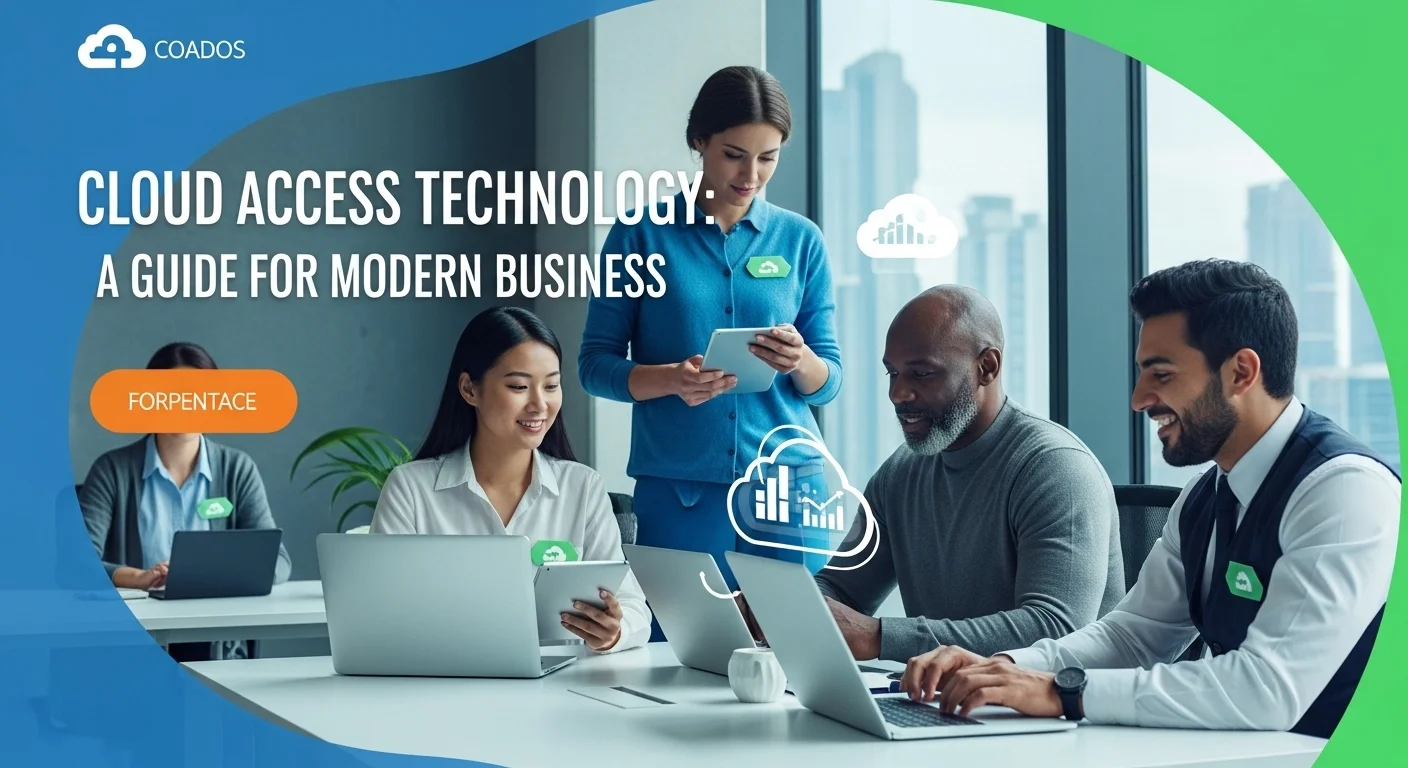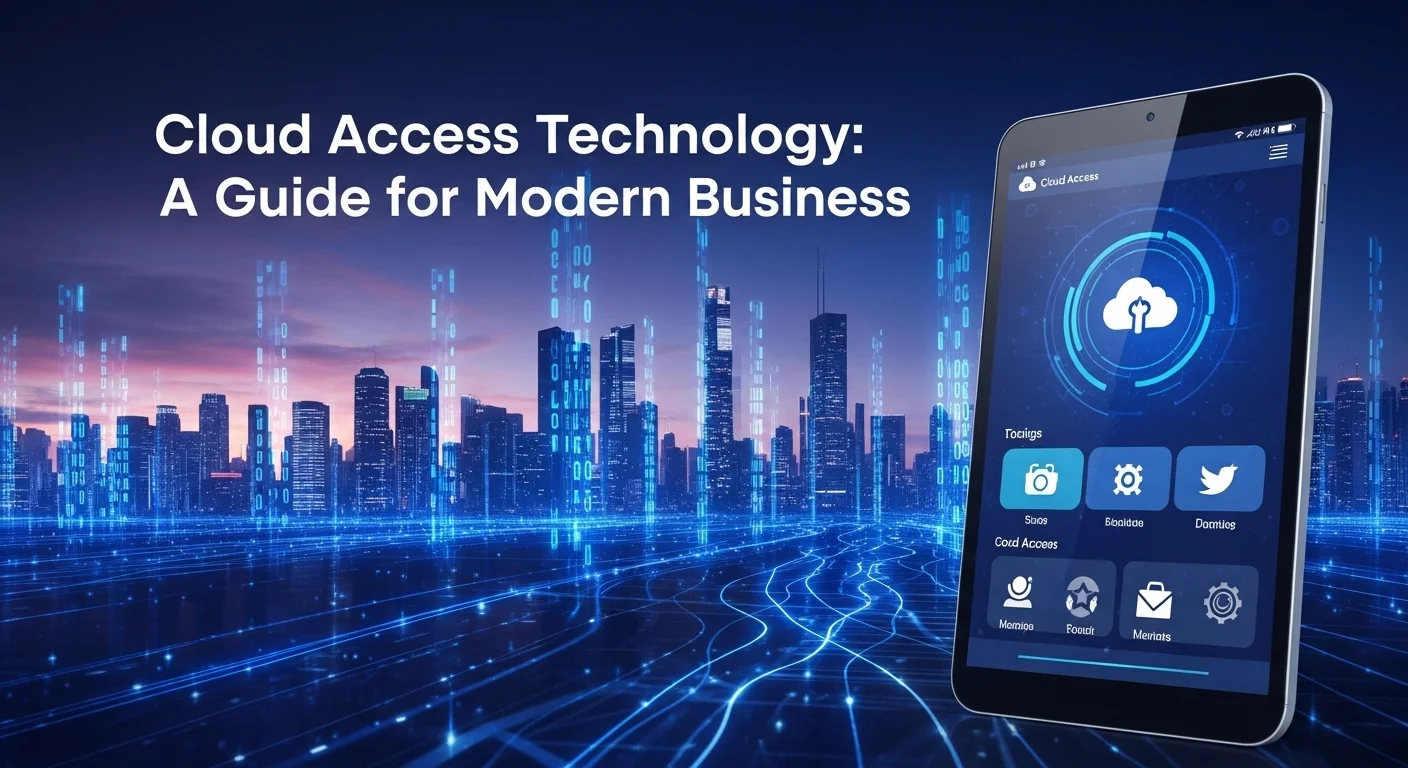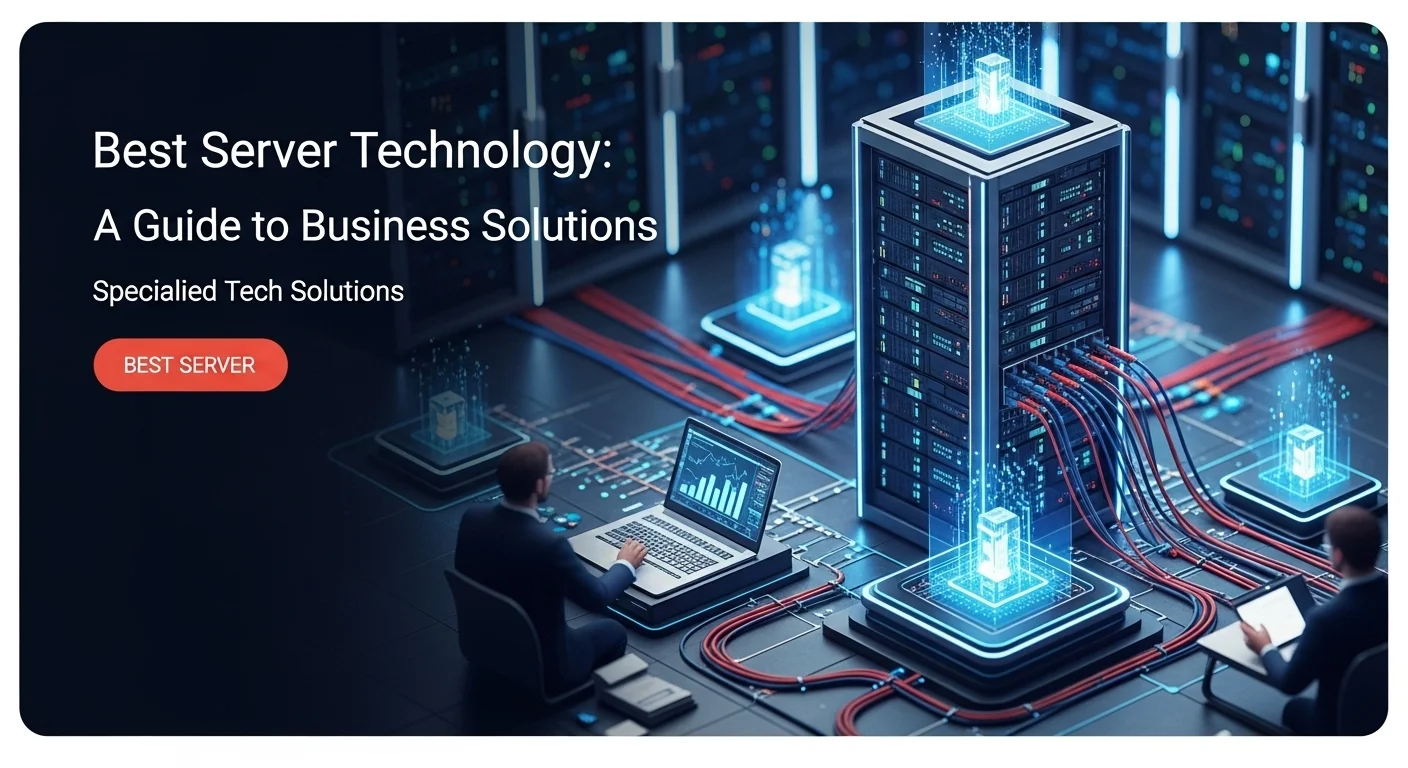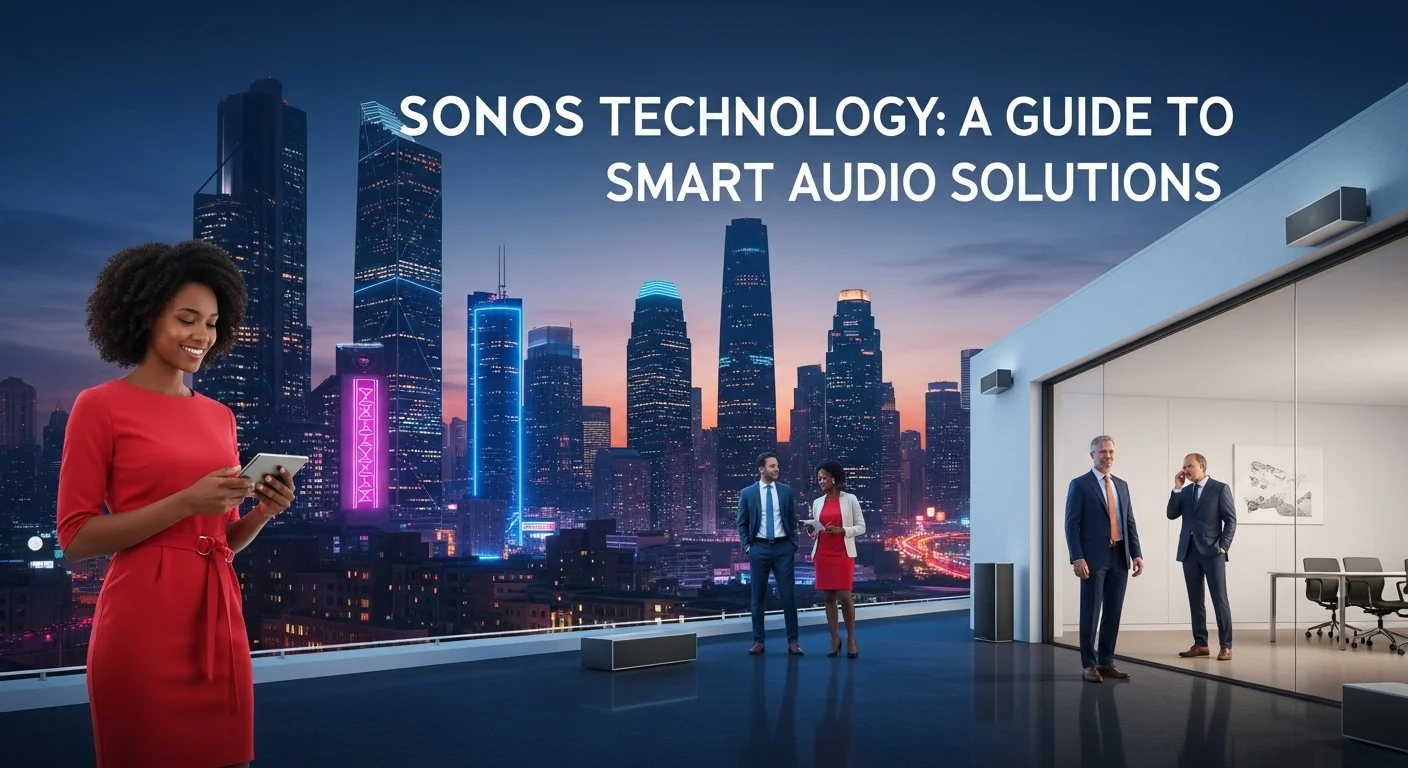Unlocking the Cloud: A Practical Guide to Smart and Secure Access

Executive Summary
In my years as a cloud architect, I've seen countless businesses make the leap to the cloud, excited by the promise of agility and innovation. But there's a crucial piece of the puzzle that's often overlooked: how you let people in. Secure, seamless access isn't just a technical detail; it's the foundation of your entire cloud strategy. Getting it right empowers your remote team, protects your most valuable data, and allows you to scale without fear. Getting it wrong can turn your powerful cloud investment into a major liability. This article is my straight-to-the-point guide, cutting through the complexity. We'll explore everything from the basics of who gets access and why, to the advanced strategies that keep modern digital businesses running safely. Whether you're a business owner wanting to enable a remote workforce or a tech enthusiast curious about the systems powering our world, this is your roadmap to mastering cloud access.
Table of Contents
Table of Contents
- What is Cloud Access, Really? And Why It's Everything Today
- The Three Pillars of Smart Access Control
- A Practical Guide to Cloud Access Tools and Solutions
- Actionable Tips for Mastering Your Cloud Access
What is Cloud Access, Really? And Why It's Everything Today
At its heart, Cloud Access is simply the way we connect to and use all the digital tools, data, and power stored in a cloud environment. Think of it as the set of keys and security protocols for your digital office. In a world where businesses are moving online faster than ever, getting this right isn't just an IT task—it's a core business strategy. It’s what makes remote work possible and allows a small startup in a garage to use the same powerful computing resources as a global corporation, paying only for what they use. I've seen companies with brilliant cloud strategies falter because they treated access as an afterthought. It's like building a high-tech vault with a flimsy wooden door. This newfound freedom to access anything from anywhere brings a huge challenge: security. Opening up your resources means you have to be incredibly careful about who comes in. This is where cloud security access becomes your most important job. It’s about making sure the right people get the right level of access, at the right time, and for the right reasons—a concept we call the 'principle of least privilege.' The system that manages all of this is known as identity and access management (IAM). Your IAM is the digital bouncer, checking IDs and deciding who gets into which room. Without a solid IAM strategy, your company's most sensitive information is at risk, which can lead to disastrous data breaches. The shift to remote and hybrid work has put this into overdrive. Your team, partners, and contractors all need to access the cloud from anywhere, using all sorts of devices. Managing this kind of large-scale network access without a modern approach is a recipe for slowdowns and security holes. It’s not just about people, either. In the cloud, countless applications and services are constantly talking to each other. That machine-to-machine access needs to be just as secure. In short, cloud access is the critical link between your people and your digital assets. A weak setup can undo all the benefits of the cloud, but a strong one provides a secure foundation for you to innovate and grow with peace of mind.
The Three Pillars of Smart Access Control
To truly understand cloud access, you need to know its three core functions: Authentication, Authorization, and Auditing. Let's break them down in simple terms. Authentication is all about proving you are who you say you are. The old username and password combo just doesn't cut it anymore; I've seen too many breaches start with a single stolen password. Today, Multi-Factor Authentication (MFA) is the gold standard. It requires at least two pieces of evidence—like your password (something you know) plus a code from your phone (something you have) or your fingerprint (something you are). This simple extra step makes it exponentially harder for bad actors to get in. Next comes Authorization. Once the system confirms your identity, it needs to know what you're allowed to do. This is where Role-Based Access Control (RBAC) is a lifesaver. Instead of giving permissions to each person individually (a nightmare to manage), you create roles like 'Marketing Manager' or 'Developer.' You assign permissions to the role, and then assign people to that role. This keeps things consistent and easy to manage. A good cloud identity management system lets you get very specific. For example, a developer can create new test servers but has no permission to touch the customer database. Finally, there's Auditing. This means keeping a detailed log of who did what, and when. These audit trails are crucial for spotting suspicious activity, investigating incidents if they happen, and proving you're compliant with regulations like GDPR or HIPAA. Continuously monitoring these logs is a key part of any effective cloud security access strategy. Adopting these pillars is essential because the old security model of building a wall around your office network is obsolete. In the cloud, your identity is the new perimeter. This is the idea behind modern security frameworks like Zero Trust, which operates on a simple but powerful principle: 'never trust, always verify.' Every single request to access a resource must be authenticated and authorized, no matter where it's coming from. For your business, mastering this isn't just about preventing disaster; it's about unlocking potential. When your team can securely access cloud resources remotely, they are more productive and flexible. It allows you to scale your operations up or down instantly, avoiding the huge costs of physical data centers. A strong IAM solution is one of the best investments you can make, saving you from the multi-million dollar costs of a data breach. Ultimately, cloud access is a delicate balance of security, policy, and user experience. It's the key that unlocks the full power of the cloud, enabling you to build a more agile, innovative, and resilient business.

A Practical Guide to Cloud Access Tools and Solutions
So, how do you actually build a secure cloud access system? Let's walk through the toolbox, from the old-school methods to the cutting-edge solutions that power modern businesses. For decades, the trusty Virtual Private Network (VPN) was the go-to for remote access. A VPN creates a secure, encrypted tunnel from your laptop back to the company network. It was a solid solution when everyone worked from an office. However, in today's cloud-first world, VPNs show their age. They operate on a 'castle-and-moat' model: once you're inside the VPN, you're often treated as 'trusted,' with broad access to the network. This is a huge security risk. If an attacker steals a user's VPN login, they can move around freely inside your network. VPNs also create bottlenecks, since all traffic has to be routed through a central point, which can be painfully slow for a global team trying to manage large-scale network access. This is why so many of us in the industry have moved on to a far better approach: Zero Trust Network Access (ZTNA). Unlike a VPN, ZTNA works on that 'never trust, always verify' principle. It never puts the user 'on the network.' Instead, it grants access to specific applications one at a time, only after verifying the user's identity for that specific session. This dramatically shrinks the attack surface and is a much more secure and scalable way to let your team access the cloud from anywhere. To get even more control, we use tools called Cloud Access Security Brokers (CASBs). A CASB is like a security checkpoint that sits between your users and your cloud services (like Microsoft 365, Salesforce, or AWS). It enforces your security policies, spots risky behavior, prevents data leaks, and ensures you're meeting compliance standards. It's an essential tool for any business that relies heavily on cloud apps. The latest evolution in this space is something called Secure Access Service Edge (SASE), pronounced 'sassy.' I've helped several companies adopt this model, and it's a game-changer. SASE combines your networking (like SD-WAN) and your security services (like ZTNA, CASB, and firewall) into a single, unified platform delivered from the cloud. The goal is to provide fast, secure access to anyone, anywhere, without routing traffic through an old-fashioned data center. It simplifies everything and provides consistent security everywhere. Underlying all of this is your identity and access management (IAM) system. This is the bedrock of your entire security posture. Modern IAM solutions offer powerful tools:
- Single Sign-On (SSO): Lets users log in once to access all their approved apps. It's better for users and more secure than juggling dozens of passwords.
- Multi-Factor Authentication (MFA): As I said before, this is non-negotiable. It's the single most effective control you can implement to prevent unauthorized access.
- Privileged Access Management (PAM): This is for your 'super-users'—the admins with the keys to the kingdom. PAM tools secure these powerful accounts with features like password vaulting and session recording to prevent misuse.

Actionable Tips for Mastering Your Cloud Access
Deploying technology is only half the battle. A truly great cloud access strategy is built on smart habits and a security-conscious culture. Here are the practical tips and strategies I share with every client to improve their security and make their cloud experience better for everyone. My number one rule is to religiously enforce the principle of least privilege. It's a simple concept: don't hand out the master key when a key to a single room will do. Give every user and every application the absolute minimum level of permission they need to do their job. It might feel like a little extra work upfront, but it dramatically reduces your risk. And please, review these permissions regularly! When someone changes roles or leaves the company, their access needs to be adjusted or revoked immediately. Most modern identity and access management (IAM) systems can even automate these reviews for you. Second, think about security from the data outwards, not the network inwards. Classify your data (e.g., public, internal, confidential) and apply security controls accordingly. I always advise that any data classified as confidential or higher must be encrypted, both when it's stored (at rest) and when it's being sent over a network (in transit). Cloud providers offer easy-to-use encryption and key management services that make this straightforward. This way, even if someone bypasses your other defenses, the data itself remains useless to them. To make life better for your team needing to access the cloud from anywhere, choose solutions that are both secure and easy to use. I've seen productivity plummet because of slow, clunky remote access tools. Modern ZTNA solutions are often invisible to the user, providing a far smoother experience than a traditional VPN. Pair that with SSO, and you've eliminated a major source of user frustration: forgotten passwords. For businesses managing large-scale network access, performance is everything. The SASE architecture I mentioned earlier is perfect for this, as it moves security checks closer to the user, reducing lag. Another pro-tip is to use a Content Delivery Network (CDN) to cache your data and applications at locations around the globe, making access faster for everyone. In terms of tools, look beyond the basics. A Security Information and Event Management (SIEM) system like Microsoft Sentinel or Splunk is vital. It pulls in log data from all your systems and uses AI to help you spot threats you'd otherwise miss. Also, look at Cloud Security Posture Management (CSPM) tools. They continuously scan your cloud environment for misconfigurations—the #1 cause of cloud breaches—and help you fix them. But never forget the human element. Your employees are your first line of defense. I can't stress this enough: invest in regular security training. Teach them how to spot phishing emails and why using the same password everywhere is a terrible idea. I remember working with a finance company that was struggling with security across AWS and Azure. The game-changer for them wasn't a single piece of tech, but a combination of a central IAM platform to enforce consistent policies and a CASB to monitor their apps. This gave them the visibility they needed to meet tough regulations. If you want to keep learning, I always point people to the Cloud Security Alliance (CSA). They're a non-profit that provides solid, no-nonsense guidance and best practices. In the end, improving your cloud access is an ongoing process. It's a mix of the right tech, smart policies, and continuous education. By taking this holistic approach, you'll not only be more secure but also better equipped to harness the incredible power of the cloud.
Expert Reviews & Testimonials
Sarah Johnson, Business Owner ⭐⭐⭐
The information is solid, but as a small business owner, I would have loved to see a case study on how a company like mine implemented this without a huge IT team.
Mike Chen, IT Consultant ⭐⭐⭐⭐
A great overview of Cloud Access. It clarified the differences between ZTNA and SASE for me, which I was struggling with. Some parts are still a bit technical, but overall very helpful.
Emma Davis, Tech Expert ⭐⭐⭐⭐⭐
Fantastic article! As someone specializing in cybersecurity, I found the breakdown of IAM and PAM to be comprehensive and spot-on. Highly recommend.



